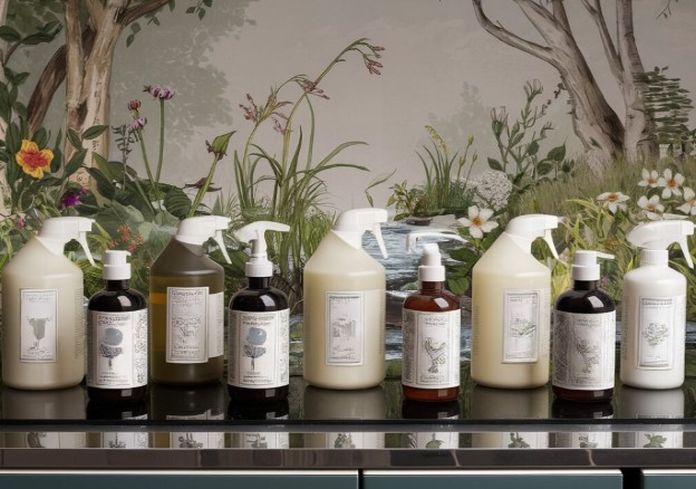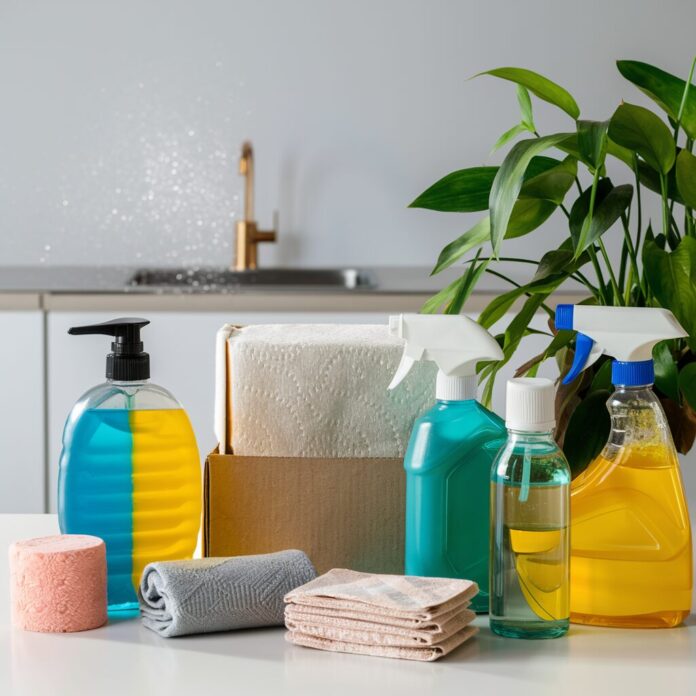In today’s world, where environmental concerns are at the forefront, many people are seeking ways to live more sustainably. One impactful way to contribute to a healthier planet is by adopting eco-friendly cleaning solutions. These methods not only reduce our carbon footprint but also ensure a healthier living environment free from harmful chemicals.
This blog post will explore various eco-friendly cleaning solutions, offering practical tips and insights to help you keep your home green and clean. You can make a positive impact on the environment, whether you’re using these methods yourself or opting for cleaning services done in Austin, Texas.
Why Go Green with Your Cleaning Routine?


The conventional products found in most homes contain a myriad of chemicals that can harm both the environment and your health. These chemicals can pollute waterways, contribute to air pollution, and pose risks to our health, such as respiratory issues and skin irritations. By switching to eco-friendly cleaning solutions, you can reduce these risks and create a safer living environment for your family.
The Basics of Eco-Friendly Cleaning
Eco-friendly cleaning is about using natural, non-toxic products and methods to clean your home. These solutions are often just as effective as their chemical-laden counterparts but without the harmful side effects. Here are some basics to get you started:
Ingredients to Look For
- Vinegar: A natural disinfectant that can cut through grease and grime.
- Baking Soda: Great for scrubbing and deodorizing.
- Lemon Juice: Effective for removing stains and acting as a natural bleach.
- Essential Oils: Provide natural fragrances and can have antibacterial properties.
Ingredients to Avoid
- Phthalates: Often found in synthetic fragrances, can cause hormonal disruptions.
- Triclosan: An antimicrobial agent that can contribute to antibiotic resistance.
- Ammonia: Can irritate the skin, eyes, and respiratory system.
- Chlorine: A strong oxidizer that can produce harmful byproducts.
DIY Eco-Friendly Cleaning Recipes


Creating your own solutions is a great way to ensure that you know exactly what is in your products. Here are some simple recipes to get you started:
All-Purpose Cleaner
Ingredients:
- 1 cup of water
- 1 cup of vinegar
- 10 drops of essential oil (e.g., tea tree, lavender)
Instructions:
- Mix all ingredients in a spray bottle.
- Shake well before each use.
- Spray on surfaces and wipe clean with a cloth.
Glass Cleaner
Ingredients:
- 1 cup of water
- 1 cup of vinegar
- 1 tablespoon of cornstarch
Instructions:
- Mix all ingredients in a spray bottle.
- Shake well before each use.
- Spray on glass surfaces and wipe with a microfiber cloth for a streak-free shine.
Bathroom Scrub
Ingredients:
- 1 cup of baking soda
- 1/4 cup of hydrogen peroxide
- 1 teaspoon of liquid Castile soap
Instructions:
- Mix all ingredients to form a paste.
- Apply to bathroom surfaces with a cloth or sponge.
- Scrub and rinse thoroughly.
Commercial Eco-Friendly Cleaning Products
If DIY isn’t your style, many commercial products are eco-friendly and readily available. When choosing these products, look for certifications such as USDA Organic, Green Seal, or the EPA’s Safer Choice label. Some popular brands include:
- Seventh Generation: Offers a wide range of plant-based products.
- Ecover: Known for their biodegradable ingredients and recyclable packaging.
- Mrs. Meyer’s Clean Day: Combines natural ingredients with pleasant scents.
Tips for a Green Cleaning Routine
Adopting a green cleaning routine goes beyond just switching products. Here are some tips to make your habits more eco-friendly:
Reduce, Reuse, Recycle
Minimize the number of products you use. Use reusable cloths and mop heads instead of disposable ones. Properly recycle containers and packaging of your cleaning products.
Use Water Wisely
Conserve water by using it sparingly when cleaning. For example, use a bucket of water for mopping instead of leaving the tap running.
Proper Ventilation
Ensure good ventilation while cleaning to reduce the buildup of any potentially harmful vapors, even from natural products.
Energy-Efficient Cleaning Tools
Use energy-efficient appliances like vacuum cleaners with HEPA filters to reduce dust and allergens in your home.
The Environmental Impact of Traditional Cleaning Products


Traditional products can have a significant environmental impact. Many of these products contain volatile organic compounds (VOCs), which can contribute to air pollution and respiratory problems. Additionally, the manufacturing and disposal of these products can lead to water pollution and increased landfill waste.
Health Benefits of Eco-Friendly Cleaning
Using eco-friendly cleaning products can improve indoor air quality and reduce exposure to harmful chemicals. This can be particularly beneficial for individuals with allergies, asthma, or other respiratory conditions. Moreover, these products are often gentler on the skin and less likely to cause irritation.
Common Myths
Eco-Friendly Products Are Less Effective
Many people believe that natural products are not as effective as chemical ones. However, numerous studies and user experiences show that eco-friendly products can be just as effective, if not more so, in tackling household dirt and grime.
Eco-Friendly Cleaning Is More Expensive
While some eco-friendly products may have a higher upfront cost, they are often more concentrated, meaning you use less product over time. Additionally, making your own cleaning solutions can be very cost-effective.
It’s Hard to Find Eco-Friendly Products
With the growing awareness of environmental issues, eco-friendly products are becoming more widely available. Many grocery stores and online retailers now offer a variety of green cleaning products.
How to Transition to Eco-Friendly Cleaning
Transitioning to eco-friendly cleaning doesn’t have to happen overnight. Here are some steps to make the switch easier:
Start Small
Begin by replacing one or two conventional products with eco-friendly alternatives. This allows you to gradually adjust to new products and routines.
Educate Yourself
Learn about the ingredients in your products and their potential effects on health and the environment. This knowledge will help you make informed choices.
Experiment with DIY Solutions
Try making your own cleaning solutions using natural ingredients. This can be a fun and rewarding way to ensure your home is clean and green.
Share Your Knowledge
Educate friends and family about the benefits of eco-friendly cleaning. Sharing your experiences can encourage others to make the switch as well.
In Summary


Eco-friendly cleaning solutions offer a powerful way to keep your home clean while protecting the environment and your health. By choosing natural ingredients, making your own products, and adopting green cleaning habits, you can make a positive impact on the planet. Remember, every small step counts. So why not start today?







